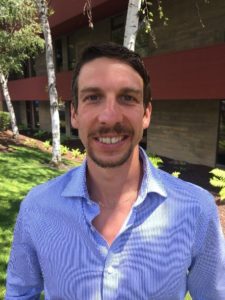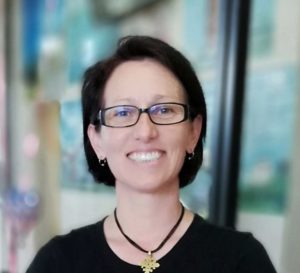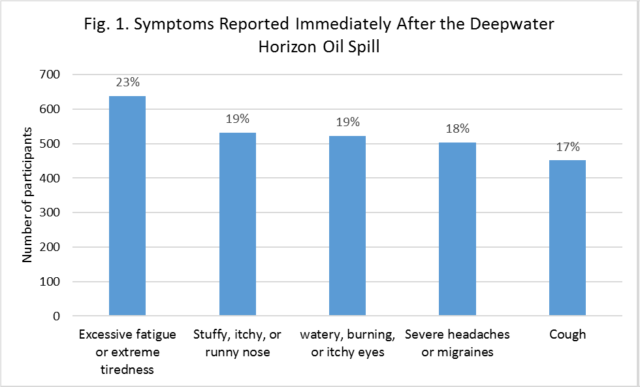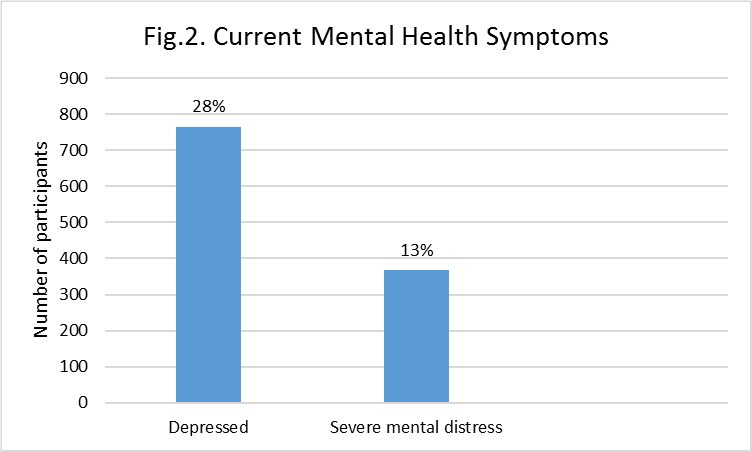Zhide Fang, PhD
Curriculum Vitae: ZFANG.CV.PDF
# Key words: Genetic Statistics In Cancers, Omic Data Analysis, Big Data Analysis, Machine Learning, and Clinical Trial
# Key words: Bayesian Method, Machine Learning and Data Mining Techniques, Mediation Analysis, Optimal Experimental Designs, and Spatial Data Analysis.
# Keywords: Clinical Trials, Study Design, Permutation Methods, and Correlated Data
# Key words: Gene Expression, DNA Methylation, Microbiome, Big Data, and Machine Learning
# Keywords: Generalized Linear Models, Robust Statistics, Survey Methodology, Surveying Sensitive Topics, and Level of Detection
The Biostatistics and Data Sciences program at our School of Public Health has a clear educational mission: to train students in statistical, computational, and data science methods to apply the methods to tackle intricate challenges within public health and biomedical research. Our program is designed to foster a profound comprehension of statistical theory and data science methods for Ph.D. students while also emphasizing the practical applications of biostatistics and data science in public health research and practice for MS, MPH, and Ph.D. students.
By completing our program, graduates acquire a diverse skill set that enables them to design and conduct research and clinical studies, analyze complex datasets, interpret results, and effectively communicate findings to various audiences, including researchers, policymakers, and the general public. Additionally, our graduates contribute to the formulation of policies and guidelines concerning the utilization of data in healthcare and public health. Our program prepares students for a wide range of career opportunities. Over the years, our graduates have secured positions in local and federal government entities, such as the Department of Education of Louisiana, prestigious research institutes like the National Institutes of Health, universities, hospitals, and industries, including insurance companies and pharmaceutical firms.
Furthermore, our program is actively involved in research endeavors and community outreach initiatives aimed at advancing the field of biostatistics and data sciences while striving to improve public health outcomes. We contribute to the advancement of health and disease understanding by developing and applying statistical methods and data science techniques.
We also engage in collaborations with researchers from diverse disciplines, assisting them in extracting meaningful insights from complex datasets and developing novel statistical methodologies for emerging areas in biomedicine. Notably, our faculty members lead biostatistics centers/cores such as the Comprehensive Alcohol-HIV/AIDS Research Center, Center for Translational Viral Oncology, LSU Superfund Data Management and Analysis Core, and Louisiana Clinical and Translational Science Center. Additionally, our faculty members secure external research funding as Principal Investigators for esteemed programs like the National Institutes of Health (NIH) and the Department of Defense (DoD) for developing and applying new statistical methods for breast cancer and prostate cancer.
Overall, the primary mission of our biostatistics and data sciences department is to enhance human health by conducting rigorous statistical analysis and data interpretation. Through our research activities and collaborations, we strive to contribute to the ongoing progress in the field, ultimately making a positive impact on public health.
| Lin, Hui-Yi | Professor & Interim Program Director |
| Fang, Zhide | Professor |
| Mercante, Donald | Professor |
| Oral, Evrim | Associate Professor |
| Yu, Qingzhao | Professor & Interim Associate Dean for Research |
Hui-Yi Lin, PhD
Interim Program Director and Professor
Phone: 504-568-6083; Email: hlin1@lsuhsc.edu
Dr. Zhide Fang worked with a team of researchers from LSUHSC to determine a new noninvasive predictive #biomarker for necrotizing enterocolitis, a deadly intestinal disease found in newborns.
A diagnostic study of 136 premature infants found that a protein involved in managing harmful bacteria in the human intestine is a reliable biomarker for the noninvasive detection of necrotizing enterocolitis (NEC). Led by researchers and clinicians at LSU Health New Orleans School of Medicine, this is one of the largest prospective clinical studies in premature infants yet. The results of the study are published online in JAMA Network Open, available here.

I am currently entering into my second year at the Center for Disease Control based in Atlanta, GA. I am serving as a biostatistician and assist on studies to be published in peer-reviewed journals examining provider practice with respect to various diseases. Additionally I am developing protocols for power analysis and sample size within my division as well as course modules for incoming fellows.
After seven years of research I came to enjoy the analytical process of the studies I was conducting. I felt that being able to put my findings into descriptive form to show and explain was very fulfilling after all of my hard work. As a New Orleans native I wanted to stay close to home and was aware of the strong work done at LSUHSC from many of the presentations at the Louisiana Cancer Center Scientific Retreats. I knew I’d be in good hands.
The most rewarding part of this degree was being able to expand my knowledge from an analytical perspective. The instructors were amazing at providing so many ways to approach and view problems. Also, the technical skillsets I learned through the program, the different software and applications, opened up countless opportunities for me both career and growth wise. Returning to school after so many years was a very intimidating choice but I couldn’t be happier with my decision.

I am currently a PhD candidate in biostatistics, which is a specialization within the statistics PhD jointly offered between the departments of statistics and biostatistics at the University of Wisconsin-Madison. I work with Professor Paul Rathouz on outcome-dependent sampling (ODS); the core concept of ODS is how to perform correct estimation and inference when sampling is performed based on observed values of a response, instead of a predictor. Specifically, we are thinking about how to generalize the notion of case-control, studies, which are popular in epidemiology, to non-binary outcomes. We refer to these types of studies as “generalized case-control studies”. My dissertation research revolves around how to design and analyze these types of studies.
During my time at LSUHSC I worked with Professor Zhide Fang on optimal experimental design. The work during my MS was a bit different because it was focused on design using covariates, not outcomes. However, it was particularly useful because I think it gave me a strong understanding of important design concepts.
After graduating, I would like to join a biostatistics department where I can continue to work in biomedical research. My goal is to be a clinical biostatistician and continue to develop methods and useful tools for practitioners.
During my undergraduate degree, I studied both biology and physics. I have always been interested in biology and medicine, but probably had more natural talent in mathematics. Biostatistics gives me the opportunity to use mathematics in a way that feels like it has a more immediate impact. I chose LSUHSC for personal reasons, but it ended up being the perfect place for me at the time.
My time at LSUHSC was one of the most influential times of my education. The professors I had during my MS still have a huge impact on how I think about statistics now. It was great to be in a place where I felt like I was receiving quality, individualized education. I still keep in touch with many of my instructors from LSUHSC, which is a testament to the effort they put into their students.
The most rewarding part was when I came to Wisconsin, I immediately felt prepared for the coursework and other challenges. Had I not attended LSUHSC, I think I would have struggled much more.
 June 2019
June 2019Currently, I work as a Senior Biostatistician at Stanford University, School of Medicine. I am responsible for running clinical studies under an umbrella of projects that span University’s Pediatric Heart Center, Hospital Medicine, Behavioral and Developmental Studies, and a triplet of concussion studies. A joint effort of University’s departments of neurology, neurosurgery, engineering, center for clinical research, NIH, and PAC-12 are looking into the long-term effects of concussive and sub-concussive impacts on athletes’ brain structure using an in-house developed, censors embedded mouth-guard and in-house developed AI software for evaluating individual events. Currently, my work is mostly in clinical trials and bio-medical sciences in general. I work on everything that is a part of being a senior biostatistician: design of experiments, grant writing, programming, statistical analysis, manuscript writing and editing, etc. That is the fun stuff. I work on developing statistical methodologies as well. I am also responsible for leading and training junior statisticians and preparing training sessions for statistical beginners.
Biostatistics is a marriage between my two most favorite disciplines; mathematics and biology. I could never decide which one I liked better. I loved medicine and biology but always knew that I can influence more and save much more lives through mathematics. It is not an accident that mathematics is called the “queen of the sciences”. However, I missed being in touch with biology throughout my initial years as a mathematician. When I eventually learned about the existence of biostatistics it was clear what career I have to pursue. I learned about the LSUHSC Biostatistics program when Dr. Volaufova was on sabbatical at my Alma Matter in my home country, so you can say it was her who led me there.
Of receiving my PhD or working towards it? The best part of receiving the degree was the first paycheck. And the knowledge that I now have my dream job and things will only get better from here. About working towards my degree, it was working with my mentors. Learning about new, unexplored areas of statistics, how to conduct theoretical research, be independent, and also making my program work. You know, the feeling when the program finally runs as intendedJ. LSUHSC has that unique one-on-one approach you can hardly get anywhere else. You can be sure that you will get enough attention and you can always ask questions outside the scope of the classwork. Faculty members were extremely helpful and were always there when I needed them the most. LSUHSC also has unmatched opportunities for collaboration that are readily available. You can work alongside distinguished researchers on various projects of your interest. There is a huge demand and not enough hands to do all the work. It is only up to you if you pick up the call. In the end, these opportunities are what eventually helped me land the best job in the world.
 May 2019
May 2019I am a senior research scientist with Humana Healthcare Research. My primary responsibility is to design scientifically valid healthcare studies to answer research questions around clinical and economic trends. Using large ‘real world’ healthcare data sources I develop measures, produce statistical output and interpret and report study results through presentations, abstracts and publications.
By the time I enrolled into the LSUHSC Biostatistics Program I had already enjoyed a long career in healthcare data management which included database development, data maintenance and data monitoring but, I did not have training or skills in statistical data inference. I love working with healthcare data and I knew I wanted to do more with it and could apply the programming skills I already had to a biostatistics degree. I was working in a different department at the LSUHSC School of Public Health when I applied for the program and knew I would get an excellent statistics education from LSUHSC. I personally knew the faculty as colleagues. They are excellent statisticians, well published, and dedicated to helping each of their students succeed; even older and non-traditional students like me.
Designing and programming the research question which became my Master’s thesis was for me the best future job training I received from the MS program. The faculty challenged me to not be afraid to think independently and I apply these skills daily to develop well designed study protocols which I then translate into SAS code. I really love the work I do and am myself now published in a variety of journals and conferences. The LSUHSC Biostatistics Program changed my life and opened up so many opportunities I would not otherwise have had. I work from home, right here in New Orleans, on huge datasets with hundreds of thousands of observations doing exactly what I envisioned doing all those years ago.
 April 2019
April 2019I am a contracted senior statistician for Janssen Pharmaceuticals. My main job duties are designing and planning clinical trials as well as analyzing clinical trial data. In addition, I am working on improving statistical methods used in clinical trials.
Growing up, my parents worked in the medical and pharmaceutical fields. I was planning to be a doctor or a pharmacist. However, I also loved computer programming. More importantly, numbers and the way data can help people in their lives fascinates me. In college, one of my math professors, a statistician working in the pharmaceutical industry, introduced me to the drug development process and the important role a statistician plays in a clinical trial. Therefore, getting a PhD in biostatistics was a no brainer for me. I chose LSUHSC because LSU is a great college to be a part of, and it has spent a huge amount of funding on medical research. In addition, the biostatistics program provides very attractive stipends for PhD students and a lower cost of tuition compared to other state funded schools.
During my dissertation process, I learned how to think, research, and solve problems independently. In addition, I learned how to write formally and logically to demonstrate my way of thinking. All these skills help me still in my daily work. Also, the course material that you learn is what will be used in your future job. During my past 4 years of work, I used a majority of the statistical methods I learned in my courses. Most importantly, I am using SAS to do my daily job which I learned mostly as a PhD student.
Orientation Team 2021
Orientation Coordinators/ Email: SPHOrientation@lsuhsc.edu
Admissions & Student Affairs
Isabel M. Billiot, MEd
Coordinator for Admissions/Student Affairs
ibilli@lsuhsc.edu
504.568.5773
Student Recruitment
504.568.5746
Academic Affairs
Martha L. Cuccia, MPH, MCHES
Assistant to the Associate Dean for Academic Affairs
mcucci@lsuhsc.edu
504.568.5789
Contact for course schedule questions, student job opportunities and campus life.
Program Contacts
Behavioral & Community Health Sciences
Director & Associate Professor: Stephen Phillippi, Jr., PhD, LCSW, CCFC
Phone: 504-568-5958/Email: sphill2@lsuhsc.edu
or
Mr. Michael Celestin, Jr.
Phone: 504-568-5796/Email: mceles@lsuhsc.edu
Biostatistics
Director & Associate Professor: Zhide Fang, Ph.D.
Phone: (504) 568 – 6089/ Email: zfang@lsuhsc.edu
Environmental & Occupational Health Sciences
Associate Professor: Chih-yang Hu, MSPH, ScD
Phone:504-568-5939/Fax:504-568-5701/ Email: chu@lsuhsc.edu
Epidemiology
Director of Graduate Studies for Epidemiology: Ariane Rung, PhD, MPH
Phone: 504-568-5709/ Email: abedim@lsuhsc.edu
Health Policy & Systems Management
Assistant Professor, Health Policy and Systems Management Program: Angela Chiu, DrPH, MPH
Phone: 504-568-5863/ Fax: 504-568-5701/ Email: YChiu@lsuhsc.edu
International Office
http://www.lsuhsc.edu/administration/academic/ois/contact_us.aspx
Financial Aid
http://www.lsuhsc.edu/FinancialAid/
More than half of U.S. adults take dietary supplements [1]. I don’t, but some of my family members do. But does popping all of these vitamins, minerals, and other substances really lead to a longer, healthier life? A new nationwide study suggests it doesn’t.
Based on an analysis of survey data gathered from more than 27,000 people over a six-year period, the NIH-funded study found that individuals who reported taking dietary supplements had about the same risk of dying as those who got their nutrients through food. What’s more, the mortality benefits associated with adequate intake of vitamin A, vitamin K, magnesium, zinc, and copper were limited to food consumption.
The study, published in the Annals of Internal Medicine, also uncovered some evidence suggesting that certain supplements might even be harmful to health when taken in excess [2]. For instance, people who took more than 1,000 milligrams of supplemental calcium per day were more likely to die of cancer than those who didn’t.
The researchers, led by Fang Fang Zhang, Tufts University, Boston, were intrigued that so many people take dietary supplements, despite questions about their health benefits. While the overall evidence had suggested no benefits or harms, results of a limited number of studies had suggested that high doses of certain supplements could be harmful in some cases.
To take a broader look, Zhang’s team took advantage of survey data from tens of thousands of U.S. adults, age 20 or older, who had participated in six annual cycles of the National Health and Nutrition Examination Survey (NHANES) between 1999-2000 and 2009-2010. NHANES participants were asked whether they’d used any dietary supplements in the previous 30 days. Those who answered yes were then asked to provide further details on the specific product(s) and how long and often they’d taken them.
Immediately following the Deepwater Horizon oil spill, many of you reported feeling a variety of acute physical symptoms. Excessive fatigue (23% of you reported this), stuffy/runny nose (19%), watery/burning/itchy eyes (19%), severe headaches (18%), and cough (17%) were the most common symptoms reported (see Figure 1). Those of you who reported more of these symptoms were more likely to have been exposed to the oil spill.

Over a quarter of you (28%) reported feeling depressed in the past week, and 13% of you reported symptoms of severe mental distress (see Figure 2). Domestic conflict was another issue of concern. 16% of you with partners reported an increase in the number of fights with your partner, and 11% reported an increase in their intensity. All of these conditions were related to both economic and physical exposure to the oil spill.

Social capital has to do with how you interact with others in your community. We found that those of you who participated more in neighborhood organizations (what we call “structural social capital”) tended to feel more of a sense of community and cohesion (what we call “cognitive social capital”), which led to feelings of greater social support. All of these things tend to lead to less depression. But the oil spill, specifically the economic consequences of it, negatively affected those feelings of community and social support, leading to higher levels of depression.
To read more, click here:
Rung AL, Gaston S, Robinson WT, Trapido EJ, Peters ES. Untangling the Disaster-Depression Knot: The Role of Social Ties After Deepwater Horizon. Social Science & Medicine 2017 dx.doi.org/10.1016/j.socscimed.2017.01.041.
This study enrolled 252 wives or female partners of men who participated in the GuLF STUDY. These women lived in coastal Louisiana parishes between 2011 and 2013. 31% of them reported symptoms of depression, 33% reported increases in domestic fights, 31% reported memory loss post-spill, and 39% reported an inability to concentrate post-spill. All of these conditions were associated with greater total exposure and greater physical exposure to the Deepwater Horizon oil spill. Domestic fights with partner and memory loss post-spill were also both related to greater economic exposure to the oil spill.
To read more, click here:
Rung AL, Oral E, Fontham E, Harrington DJ, Trapido EJ, Peters ES. Mental health impact of the Deepwater Horizon Oil Spill among wives of clean-up workers. Epidemiology 2015;26(4):e44-e46.
We explored other ways to analyze the questions related to depression by using a method called latent profile analysis to try to better understand patterns of responses. We found that women fell into three groups: those with no depression, those with occasional depressive symptoms, and those with severe depressive symptoms. These results supported the conventional use of the depression screening tool. We also found that women with the most severe depressive symptoms tended to not have completed high school, have a lower household income, and have less social support. They also tended to report more damage to areas they fished commercially, to have experienced more economic consequences from the oil spill, and to have smelled the oil more often than women who reported fewer depressive symptoms.
Those of you who reported living in more unfavorable neighborhoods (e.g., dirtier, noisier, more visible trash and graffiti, poor condition of streets, abandoned cars or buildings) were more likely to have a higher body mass index (BMI, a measure of obesity).
The Resilience Working Group of the Gulf Coast Research Consortium developed a conceptual framework to serve as the basis for testing how access to social resources, such as formal and informal social support and assistance, can promote positive adaptation or reduced psychopathology among individuals and communities exposed to the acute collective stressor of a technological disaster such as the 2010 Deepwater Horizon Oil Spill.